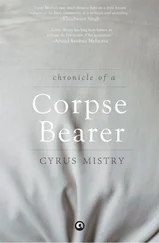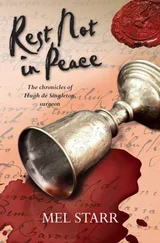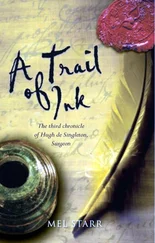Mel Starr - A Corpse at St Andrew's Chapel
Здесь есть возможность читать онлайн «Mel Starr - A Corpse at St Andrew's Chapel» весь текст электронной книги совершенно бесплатно (целиком полную версию без сокращений). В некоторых случаях можно слушать аудио, скачать через торрент в формате fb2 и присутствует краткое содержание. Год выпуска: 2010, Издательство: Kregel Publications, Жанр: Исторический детектив, на английском языке. Описание произведения, (предисловие) а так же отзывы посетителей доступны на портале библиотеки ЛибКат.
- Название:A Corpse at St Andrew's Chapel
- Автор:
- Издательство:Kregel Publications
- Жанр:
- Год:2010
- ISBN:нет данных
- Рейтинг книги:5 / 5. Голосов: 1
-
Избранное:Добавить в избранное
- Отзывы:
-
Ваша оценка:
- 100
- 1
- 2
- 3
- 4
- 5
A Corpse at St Andrew's Chapel: краткое содержание, описание и аннотация
Предлагаем к чтению аннотацию, описание, краткое содержание или предисловие (зависит от того, что написал сам автор книги «A Corpse at St Andrew's Chapel»). Если вы не нашли необходимую информацию о книге — напишите в комментариях, мы постараемся отыскать её.
A Corpse at St Andrew's Chapel — читать онлайн бесплатно полную книгу (весь текст) целиком
Ниже представлен текст книги, разбитый по страницам. Система сохранения места последней прочитанной страницы, позволяет с удобством читать онлайн бесплатно книгу «A Corpse at St Andrew's Chapel», без необходимости каждый раз заново искать на чём Вы остановились. Поставьте закладку, и сможете в любой момент перейти на страницу, на которой закончили чтение.
Интервал:
Закладка:
“Some beast has done this, I think,” he muttered as he stood. “See how his surcoat is torn at the arms, as if he tried to defend himself from fangs.”
I knelt on the opposite side of the corpse to view in my turn the wound which took the life of Alan the beadle. It seemed as Hubert Shillside said. Puncture wounds spread across neck and arms, and rips on surcoat and flesh indicated where claws and fangs had made their mark. I sent the reeve back to Bampton Castle for a horse on which to transport Alan back to the town and to his wife. The others who stood in the path began to drift away. The plowmen who found him returned to their team. Soon only the coroner and I remained to guard the corpse. It needed guarding. Already a flock of carrion crows flapped high above the path.
I could not put my unease into words, so spoke nothing of my suspicion to Shillside. But I was not satisfied that some wild beast had done this thing. I believe the coroner was apprehensive of this explanation as well, for it was he who broke the silence.
“There have been no wolves hereabouts in my lifetime,” he mused, “nor wild dogs, I think.”
“I have heard,” I replied, “Lord Gilbert speak of wolves near Goodrich. And Pembroke. Those castles are near to the Forest of Dean and the Welsh mountains. But even there, in such wild country, they are seldom seen.”
Shillside was silent again as we studied the body at our feet. My eyes wandered to the path where Alan lay. When I did not find what I sought, I walked a few paces toward the town, then reversed my path and inspected the track in the direction of St Andrew’s Chapel. My search was fruitless.
Hubert watched my movements with growing interest. “What do you seek?” he finally asked. It was clear to him I looked for something in the road.
“Tracks. If an animal did this, there should be some sign, I think. The mud is soft.”
“Perhaps,” the coroner replied. “But we and many others have stood about near an hour. Any marks a beast might have made have surely been trampled underfoot.”
I agreed that might be. But another thought also troubled me. “There should be much blood,” I said, “but I see little.”
“Why so?” Shillside asked.
“When a man’s neck is torn as Alan’s is, there is much blood lost. It is the cause of death. Do you see much blood hereabouts?”
“Perhaps the ground absorbed it?”
“Perhaps…let us look in the hedgerow, where we found him.”
We did, carefully prying the nettles apart. The foliage was depressed where Alan lay, but only a trace of blood could be seen on the occasional new leaf or rock or blade of grass.
“There is blood here,” I announced, “but not much. Not enough.”
“Enough for what?” the coroner asked with furrowed brow.
“Enough that the loss of blood would kill a man.”
Shillside was silent for a moment. “Your words trouble me,” he said finally. “If this wound” — he looked to Alan’s neck — “did not kill him, what did?”
“’Tis a puzzle,” I agreed.
“And see how we found him amongst the nettles. Perhaps he dragged himself there to escape the beasts, if more than one set upon him.”
“Or perhaps the animal dragged him there,” I added. But I did not believe this, for reasons I could not explain.
It was the coroner’s turn to cast his eyes about. “His shoes and staff,” Shillside mused. “I wonder where they might be?”
I remembered the staff. Whenever the beadle went out of an evening to watch and warn, he carried with him a yew pole taller than himself and thick as a man’s forearm. I spoke to him of this weapon once. A whack from it, he said, would convince the most unruly drunk to leave the streets and seek his bed.
“He was proud of that cudgel,” Hubert remarked as we combed the hedgerow in search of it. “He carved an ‘A’ on it so all would know ’twas his.”
“I didn’t know he could write.”
“Oh, he could not,” Shillside explained. “Father Thomas showed him the mark and Alan inscribed it. Right proud of it, he was.”
We found the staff far off the path, where some wasteland verged on to a wood just behind St Andrew’s Chapel. It lay thirty paces or more from the place where Alan’s body had lain in the hedgerow. But our search yielded no shoes.
“How did it come to be here?” Shillside asked. As if I would know. He examined the club. “There is his mark — see?” He pointed to the “A” inscribed with some artistry into the tough wood.
As the coroner held the staff before me, I inspected it closely and was troubled. Shillside saw my frown.
“What perplexes you, Hugh?”
“The staff is unmarked. Were I carrying such a weapon and a wolf set upon me, I would flail it about to defend myself; perhaps hold it before me so the beast caught it in his teeth rather than my arm.”
Shillside peered at the pole and turned it to view all sides. Its surface was smooth and unmarred. “Perhaps,” he said thoughtfully, “Alan swung it at the beast and lost his grip. See how polished smooth it is…and it flew from his grasp to land here.”
“That might be how it was,” I agreed, for I had no better explanation.
As we returned to the path we saw the reeve approach with Bruce, the old horse who saw me about the countryside when I found it necessary to travel. He would be a calm and dignified platform on which to transport a corpse.
We bent to lift Alan to Bruce’s back, John at the feet and Shillside and me at the shoulders. As we swung him up, Alan’s head fell back. So much of his neck was shredded that it provided little support. I reached out a hand to steady the head and felt a thing which made my hackles rise.
“Wait,” I said, rather sharply, for my companions started and gazed in wonder at me. “Set him back on the road.”
I turned the beadle’s head and felt the place on the skull which had startled me. There was a soft depression on the skull, just behind Alan’s right ear. This cavity was invisible for the thick shock of hair which covered it. I spread the thatch and inspected Alan’s scalp, then showed my discovery to reeve and coroner.
John Holcutt was silent, but Shillside, after running his fingers across the dent, looked at me and asked, “How could a wolf do this?”
We stood and pondered this new discovery. The coroner moved first to offer an explanation. “See there, amongst the nettles in the hedgerow. There are many rocks, tossed there from the field. Mayhap Alan sought escape in the brambles but fell back and struck his head. That would account for where we found him. And unconscious, he could not defend himself as the beast tore his throat.”
I admit this made a neat explanation for what we had discovered. But I was yet troubled. “Would a man, a strong young man like Alan, fall back so violently that striking his head would kill him?”
“’Twould not have to kill him,” Shillside countered. “If he was knocked senseless the wolf could do its work an’ he would not be able to defend himself.”
“Then where is the blood?”
“Blood?” The coroner was puzzled.
“A living man, even knocked senseless, will bleed much from such a hurt as Alan has suffered. It is only the dead who will not bleed.”
“Then Alan died when his head struck the rock, you think?”
“I do,” I agreed. “Or when a rock struck Alan.”
“But…wolves do not attack a man with rocks,” Shillside said softly. “I think you are skeptical that he died from an attack by beasts. Why so?”
“Have you heard any report of wolves in the shire?” I asked him. “John, have you?”
The reeve shook his head. “Nor have I. I think no man alive in Bampton has ever heard a wolf howl.”
Читать дальшеИнтервал:
Закладка:
Похожие книги на «A Corpse at St Andrew's Chapel»
Представляем Вашему вниманию похожие книги на «A Corpse at St Andrew's Chapel» списком для выбора. Мы отобрали схожую по названию и смыслу литературу в надежде предоставить читателям больше вариантов отыскать новые, интересные, ещё непрочитанные произведения.
Обсуждение, отзывы о книге «A Corpse at St Andrew's Chapel» и просто собственные мнения читателей. Оставьте ваши комментарии, напишите, что Вы думаете о произведении, его смысле или главных героях. Укажите что конкретно понравилось, а что нет, и почему Вы так считаете.












